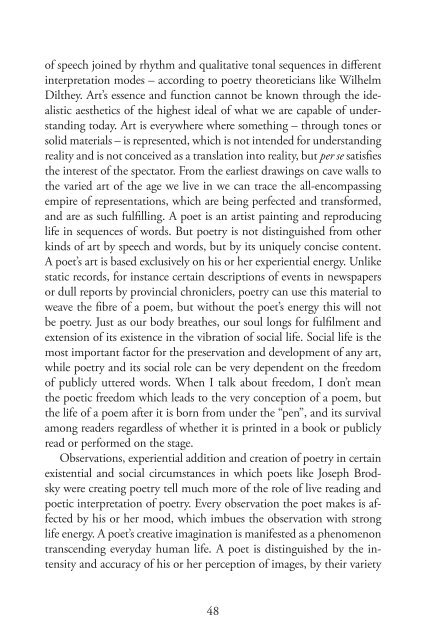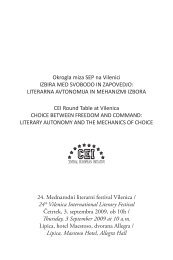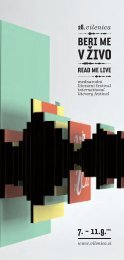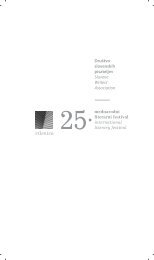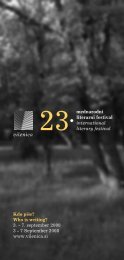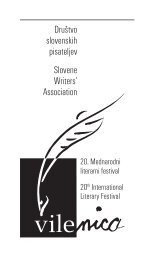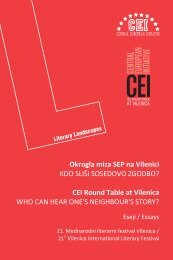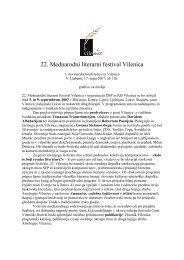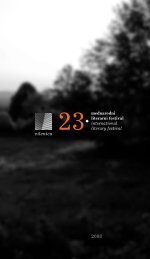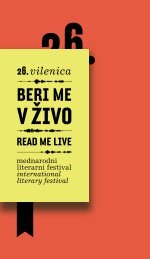Publikacija SEP 2011 - Vilenica
Publikacija SEP 2011 - Vilenica
Publikacija SEP 2011 - Vilenica
You also want an ePaper? Increase the reach of your titles
YUMPU automatically turns print PDFs into web optimized ePapers that Google loves.
of speech joined by rhythm and qualitative tonal sequences in different<br />
interpretation modes – according to poetry theoreticians like Wilhelm<br />
Dilthey. Art’s essence and function cannot be known through the idealistic<br />
aesthetics of the highest ideal of what we are capable of understanding<br />
today. Art is everywhere where something – through tones or<br />
solid materials – is represented, which is not intended for understanding<br />
reality and is not conceived as a translation into reality, but per se satisfies<br />
the interest of the spectator. From the earliest drawings on cave walls to<br />
the varied art of the age we live in we can trace the all-encompassing<br />
empire of representations, which are being perfected and transformed,<br />
and are as such fulfilling. A poet is an artist painting and reproducing<br />
life in sequences of words. But poetry is not distinguished from other<br />
kinds of art by speech and words, but by its uniquely concise content.<br />
A poet’s art is based exclusively on his or her experiential energy. Unlike<br />
static records, for instance certain descriptions of events in newspapers<br />
or dull reports by provincial chroniclers, poetry can use this material to<br />
weave the fibre of a poem, but without the poet’s energy this will not<br />
be poetry. Just as our body breathes, our soul longs for fulfilment and<br />
extension of its existence in the vibration of social life. Social life is the<br />
most important factor for the preservation and development of any art,<br />
while poetry and its social role can be very dependent on the freedom<br />
of publicly uttered words. When I talk about freedom, I don’t mean<br />
the poetic freedom which leads to the very conception of a poem, but<br />
the life of a poem after it is born from under the “pen”, and its survival<br />
among readers regardless of whether it is printed in a book or publicly<br />
read or performed on the stage.<br />
Observations, experiential addition and creation of poetry in certain<br />
existential and social circumstances in which poets like Joseph Brodsky<br />
were creating poetry tell much more of the role of live reading and<br />
poetic interpretation of poetry. Every observation the poet makes is affected<br />
by his or her mood, which imbues the observation with strong<br />
life energy. A poet’s creative imagination is manifested as a phenomenon<br />
transcending everyday human life. A poet is distinguished by the intensity<br />
and accuracy of his or her perception of images, by their variety<br />
48


